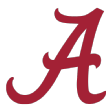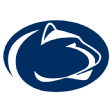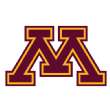Now that the Week 10 snoozefest is over, we can fully turn our attention to Week 11 and an unprecedented doubleheader on Saturday.
For the first time in the AP Poll era (started in 1936), two matchups pairing teams with records of 8-0 or better will kick off on the same day.
That Alabama-LSU is one shouldn't generate much shock, although the way Ed Orgeron's team rolls into Tuscaloosa -- ranked No. 1 and boasting Heisman Trophy front-runner Joe Burrow and an offense averaging 46.8 points per game -- certainly qualifies as a surprise.
LSU already has taken down three top-10 opponents and has played a more challenging schedule than Alabama. Burrow and Crimson Tide quarterback Tua Tagovailoa both have been brilliant, although Tagovailoa will be limited or possibly out after undergoing ankle surgery on Oct. 20. LSU hasn't beaten Alabama since the teams' regular-season meeting in 2011 at Bryant-Denny Stadium.
The matchup of 8-0 teams few anticipated before the season is in Minneapolis, as No. 13 Minnesota hosts No. 5 Penn State. The Golden Gophers are 8-0 for the first time since 1941, when they won the national title, and are 5-0 in Big Ten play for the first time since 1961. But they haven't faced a team nearly as talented as Penn State, which boasts one of the nation's stingiest defenses and a big-play offense featuring speedy wideout KJ Hamler.
It will be a historic weekend in college football, and I talked to coaches and analysts for a deep dive into LSU-Alabama, as well as a look at Penn State-Minnesota.


No. 1 LSU at No. 2 Alabama (3:30 p.m. ET, CBS)
The prevailing question is Tagovailoa's status and, if he plays, how effective he'll be. Tagovailoa has been arguably the nation's most dominant quarterback when healthy, completing 74.7% of his passes for 2,166 yards with 27 touchdowns and only two interceptions in 194 attempts.
He looks like the guy who led the Heisman Trophy race for much of 2018, operating an offense based on run-pass options that continues to pile up points (48.6 PPG) and yards (506.6 yards per game, 7.7 yards per play).
"Tua's different," an SEC coordinator told me. "He's so accurate. If Tua's healthy and plays, Alabama will score enough to win."
Another SEC defensive coordinator noted how Alabama's offensive success is especially tied to Tagovailoa, who diagnoses defenses before the snap and effectively executes run-pass options to both sides of the field.
"The RPO and Tua is what makes them go," SEC Network analyst Cole Cubelic said. "That's what makes them a 45-, 50-point-a-game offense."
As a Power 5 defensive coordinator added, "Without [Tagovailoa], there's more RPOs to the [running back side]. There's less full-field pre-snap reads. There's less improvisation. It's more, if you show them numbers in the box, they'll throw it. If you show a light box, they'll run it. It's more by the book."
Alabama backup Mac Jones made his first career start Oct. 26 at Arkansas and completed 18 of 22 passes for 235 yards with three touchdowns and no interceptions in a 48-7 win. But Jones used a simplified playbook against the SEC's worst team. LSU is a huge step up.
If Tagovailoa plays, he likely will be limited. Although he isn't a big runner -- only 18 attempts for 30 net yards this season -- his mobility is essential.
"He's good at leaving the pocket and keeping his eyes down the field," Cubelic said. "That changes everything."
This year's LSU-Alabama game is unique because both teams are structured similarly: RPO-based offenses with elite quarterbacks and big-play wide receivers, good run games that aren't overly emphasized and talented defenses that aren't quite as dominant as past ones.
Burrow, with help from new passing game coordinator Joe Brady and others, has transformed LSU's offense. But the Tigers can be slowed, as Auburn showed on Oct. 26.
"What happens if you get man-to-man [coverage] and your [receivers] aren't winning on first and second down?" an SEC coordinator said. "You have to be able to fall back on a good running game, and I don't think they have that. They only run inside zone. They're not great on the O-line."
Still, LSU's defense doesn't have to carry the team like it used to. An added benefit for Tigers defenders: They now practice against an offense that compares with Alabama's in personnel. Justin Jefferson, Ja'Marr Chase and Terrace Marshall Jr. (returned from injury Oct. 26 against Auburn) have combined for 1,901 yards and 25 touchdowns on 121 receptions.
"It's not going to be such a huge departure from what they see in practice," an SEC coach said. "There's a confidence level from that."
Alabama's receiving corps still presents major challenges. The Tide lead the FBS in average yards after catch per reception (9.52) and rank second in receiving yards after first contact (719). LSU is fifth in receiving yards after first contact (592). Other than Tagovailoa's status, Cubelic said tackling will be the biggest factor in deciding the outcome.
"Those glance routes [skinny posts] they get, the average yards after a catch when you miss a tackle is 30 yards," an SEC coach said. "If you don't make the tackle, the thing's out. It's crazy."
As an SEC coordinator added, "Alabama's receivers, you look at them like, 'Oh, s---.'"
Several coaches wonder how much man coverage LSU can play against Alabama's triple threat of DeVonta Smith, Jerry Jeudy and Henry Ruggs III. LSU spent most of last year's game in man-free coverage, where only the free safety isn't matched up. The Tigers held Alabama relatively in check (295 passing yards) but also saw Alabama's quick-strike ability as Tagovailoa found Jeudy and tight end Irv Smith Jr. on back-to-back completions of 29 and 25 yards to score a touchdown right before halftime.
"You've got to challenge guys, but you also got to get your corners a smoke break," an SEC defensive assistant said. "It only takes one play, and they've got three of them who are that explosive."
LSU's defensive backs, particularly cornerbacks Kristian Fulton and Derek Stingley Jr., are better equipped than Alabama's to play primarily man coverage, according to Cubelic.
"It's the best offense we've seen to date. ... They're going to make you earn everything you get." Penn State defensive coordinator Brent Pry on Minnesota
"The ability to play man and play it the right way, but also show man and get into zones where they can bracket people and they can cloud and double people, that's going to be a huge piece," an SEC defensive coordinator said.
LSU's Dave Aranda specializes in bringing disguised pressure, which helps a unit lacking a traditional pass rusher. No LSU player has more than three sacks, but five players have at least two, including three linebackers (Michael Divinity Jr., Damone Clark, K'Lavon Chaisson) and safety JaCoby Stevens. Cubelic likes how Alabama offensive tackles Alex Leatherwood and Jedrick Wills Jr. are performing but noted they'll need their best performance against LSU, especially with Tagovailoa limited or sidelined.
"I don't think the NFL scouts are looking at [LSU's] defensive personnel and saying, 'Oh my gosh,'" an SEC coordinator said. "They're just good players. They can't really rush the passer."
What the Tigers have is flexibility. Divinity, Chaisson, Stevens and others can play near the line of scrimmage but also back off into space.
Safety Grant Delpit, a preseason All-America selection expected to play following an ankle injury against Auburn, could be most critical to slow down the Tide.
"This is a game where him freelancing, he can be really dangerous," Cubelic said. "I don't want to say he can go off script. Maybe he takes the ball away on an RPO. Against Alabama, hybrid-flex guys, you have to have them."
Alabama's defense ranks in the top 20 nationally in yards allowed, yards per play allowed, passing defense and points allowed. Junior linebacker Terrell Lewis is surging (six sacks, 12 quarterback hurries, nine tackles for loss), cornerbacks Trevon Diggs and Patrick Surtain Jr. are playmakers and linemen such as DJ Dale affect the game.
But the Tide aren't celebrated on D like in past seasons. An offensive coordinator who faced Alabama said the linebacker group, which lost superstar Dylan Moses to a preseason ACL injury, is not as strong as usual.
"They're not choking people out on defense," an SEC assistant said. "They're still playing well. They're still really talented. I just don't know if they're as dominant."
Alabama's defensive scheme will be worth watching, especially after Auburn limited LSU to 23 points. Cubelic charted 25 plays in which Auburn lined up in a 3-1-7 formation. He also charted how little LSU used an extra man in protection against Auburn (four of 42 pass plays) versus last year (28 of 35 pass plays).
Burrow was sacked three times on Oct. 26. Alabama's pressure numbers aren't overwhelming -- it ranks 52nd nationally in sacks per pass attempt (7.2%). But the Tide must get to the LSU quarterback or it could be a long afternoon.
"They'll utilize play-action and RPO stuff and misdirection to take advantage of somewhat inexperienced linebackers," Cubelic said of LSU. "They're the best team in college football challenging the middle of the field. [Burrow] has no fear throwing the ball there: five yards, 15 yards, 50 yards. I think he'll have a big game.
"This kid lives for this. That's who he is. He wants that stage."


No. 5 Penn State at No. 13 Minnesota (noon ET, ESPN)
Each team faces a unique challenge. Minnesota's first eight opponents are a combined 33-37, so Penn State represents a major step up in competition. Penn State has road wins over Iowa and Michigan State but must overcome another tough away setting as Minnesota hosts its most hyped game in decades.
Minnesota's 1,700-pound offensive line will be in the spotlight, facing arguably the nation's best defensive front in Penn State. The Nittany Lions lead the nation in fewest yards per rush allowed (1.9), rank second in points allowed (9.6) and rank in the top 10 in total defense (280 YPG), net yards per pass attempt (5.1) and sacks (30). Yetur Gross-Matos (5.5 sacks, nine tackles for loss, six quarterback hurries) is a potential first-round NFL draft pick, fellow defensive ends Shaka Toney and Jayson Oweh are explosive and linebackers such as Micah Parsons and Cam Brown also can reach the backfield.
"We're able to keep the gas on the offensive line for four quarters," Penn State defensive coordinator Brent Pry told me.
Minnesota has surrendered 16 sacks and 44 tackles for loss, although both totals have dipped significantly in Big Ten play. Minnesota hasn't allowed a sack since Oct. 5, but as a Power 5 assistant told me of Penn State, "That's going to be a vastly different line than what they've seen."
Penn State led the nation in sacks per game last season (3.62), and it enters the game tied for eighth in total sacks (30).
"We've had to work a little bit harder to get to the quarterback with some of the protections and schemes people are giving us," Pry said. "We got some people chipping those ends. Sometimes it's been a full slide. And more than anything, teams have tried to get the ball out earlier."
Minnesota is fully committed to the pass game with quarterback Tanner Morgan, primary targets Tyler Johnson and Rashod Bateman, along with Chris Autman-Bell.
"It's the best offense we've seen to date," Pry said. "I credit offenses when they don't try to do too much. They have 2-3 zone plays, very technique sound, a great game manager at quarterback, wideouts who can catch the ball. They're going to make you earn everything you get."
Big Ten Network analyst Gerry DiNardo said Penn State's offense against Minnesota's defense is a closer matchup, especially at the line of scrimmage. "I don't think that leans one way or the other," he said. Minnesota's defense has made significant strides in recent weeks, ranking 13th nationally in yards allowed (283.8 YPG) and sixth in interceptions per pass attempt (4.8%).
Penn State's offense runs hot and cold, putting up big first halves against Purdue (28 points) and Michigan (21 points), only to cool off. The Lions have the most explosive player on the field in Hamler, who averages 16.8 yards per reception with eight touchdowns and also handles punt and kickoff returns.
"KJ's just crazy," DiNardo said. "That guy can turn the game around. He's that good."
"Hamler is pretty special," added a head coach who faced PSU. "You have to keep the ball out of his hands at all costs."
Penn State is the more tested team, beating Iowa and Michigan State on the road and four opponents currently with winning records. But Minnesota wants to validate its historic start before a raucous home crowd and a national audience.
"The last thing you want to do is downplay that crowd," DiNardo said. "Minnesota's going to be into it. It's going to be cold. It does help that [Penn State has been] in those situations. It's an experience you can speak to."
Week 10 notes
Antonio Gibson and Damonte Coxie score five touchdowns as Memphis sends SMU to its first loss 54-48.
Memphis completed a banner Saturday by scoring 54 points against SMU and introducing yet another offensive standout in Antonio Gibson. The senior wide receiver had a team-record 386 all-purpose yards, including a pinballing 78-yard touchdown run and a 97-yard kick return for another score.
Gibson's emergence got me thinking about the number of explosive and versatile offensive players Memphis has produced in Mike Norvell's tenure. Memphis has had plenty of productive running backs (Darrell Henderson, Patrick Taylor, Doroland Dorceus, Tony Pollard, Kenneth Gainwell), wide receivers (Anthony Miller, Phil Mayhue, Damonte Coxie) and tight ends (Joey Magnifico, Sean Dykes).
"This is a system that's built for playmakers," Norvell told me Sunday. "We've got the versatility within it to be able to showcase all their skills and talents. A guy like Antonio, to see what he did, lining up at all different places as a receiver -- outside, inside, be able to get him in the backfield -- and obviously what he did in the return game were all huge.
"It's been a lot of fun over the years to see guys come in and be showcased in a variety of different ways. That's what makes this offense go."
Norvell has taken a similar approach with Gainwell, a redshirt freshman who eclipsed 1,000 rushing yards against SMU but also ranks second on the team in receptions (36) and first in touchdowns (15). Gainwell has lined up at slot receiver and Wildcat quarterback in addition to his primary position.
"When we get recruits on campus, I try to show them what we do and allow them to tell me if they can see themselves being successful in the variety of ways we can utilize them," Norvell said. "I really believe this offense sells itself. When Kenny was getting recruited, he's watching Darrell Henderson, Tony Pollard, even going back to when I was at Arizona State -- Marion Grice, D.J. Foster, Kalen Ballage.
"You put yourself in an offense that's going to allow you to do everything, that's what kids want."
So, who's next to break out? Norvell mentioned wide receiver Calvin Austin III, who has 178 yards and two touchdowns on only seven receptions this season.
"We want to be able to create angles and big plays," Norvell said. "Whether it's RPOs, the shots downfield, even run checks, being able to create the best leverage that we can, it all goes hand in hand; our guys have done a great job of that throughout the year."
After its third Pac-12 road win, Oregon State holds sole possession of second place in the Pac-12 North division with four games to play, just like we all expected. At 4-4, the Beavers have eclipsed their win total from the past two seasons and already have their most league wins since 2016.
"We've got a ton to play for," second-year coach Jonathan Smith told me Saturday night. "On paper, we still have an outside chance at a Pac-12 championship, which is crazy to say."
The offense is leading the way, piling up 56 points on Saturday at Arizona, four weeks after scoring 48 at UCLA. Smith likes his team's balance with a standout receiver (Isaiah Hodgins, 895 yards, 12 touchdowns) and a standout runner (Artavis Pierce, 696 yards, six touchdowns). Quarterback Jake Luton is "totally different from last year," Smith said, passing for 1,930 yards with 19 touchdowns and only one interception in 255 attempts.
Smith also credits better protection for Luton, especially from Clay Cordasco, a first-year starter at guard.
"We're pretty balanced," the coach said. "We can run it, throw it, the quarterback's playing pretty well, we're protecting him. Offensively, we've made strides to win a couple high-scoring games."
Oregon State's next step is playing cleaner, especially on defense, after receiving 25 penalties over the past two weeks. The remaining schedule is tough -- Washington (home), Arizona State (home), Washington State (road), Oregon (road) -- and the Beavers must win two to reach their first bowl since 2013.
"We're a good enough team to beat anybody when we play our best," Smith said. "We have confidence to beat a huge powerhouse."
Florida State's dismissal of Willie Taggart on Sunday should be cautionary for another second-year Power 5 coach feeling the heat: Arkansas' Chad Morris. Damaging home losses doomed Taggart's tenure from the start. Morris hasn't been able to avoid them in Fayetteville.
Taggart's final game as FSU's coach, a 27-10 loss to Miami on Saturday, marked the Seminoles' second-worst defeat at home to its in-state rival. According to ESPN Stats & Information research, the Seminoles' 203 yards marked their fewest at home since 2006. Taggart's Seminoles debut was a 24-3 home loss to Virginia Tech.
Clemson also beat FSU 59-10 in Tallahassee last season. This season's opener against Boise State -- relocated from Jacksonville to Tallahassee -- featured FSU blowing a 31-13 lead and losing. The next week, FSU needed overtime to survive Louisiana-Monroe. And now the Miami loss.
Morris is 0-14 in SEC play after Saturday's 54-24 home loss to a slumping Mississippi State team. It marked Arkansas' third home loss by 30 points or more under Morris, who also has home defeats to San Jose State earlier this year and North Texas (44-17) in 2018.
"Nobody at Arkansas should ever lose to those schools," an FBS coach recently told me.
Although all four of Morris' Arkansas wins have come at home, a loss this week to Western Kentucky would make it very difficult to bring him back in 2020. FSU found the money to fire Taggart, and Arkansas could follow suit.
